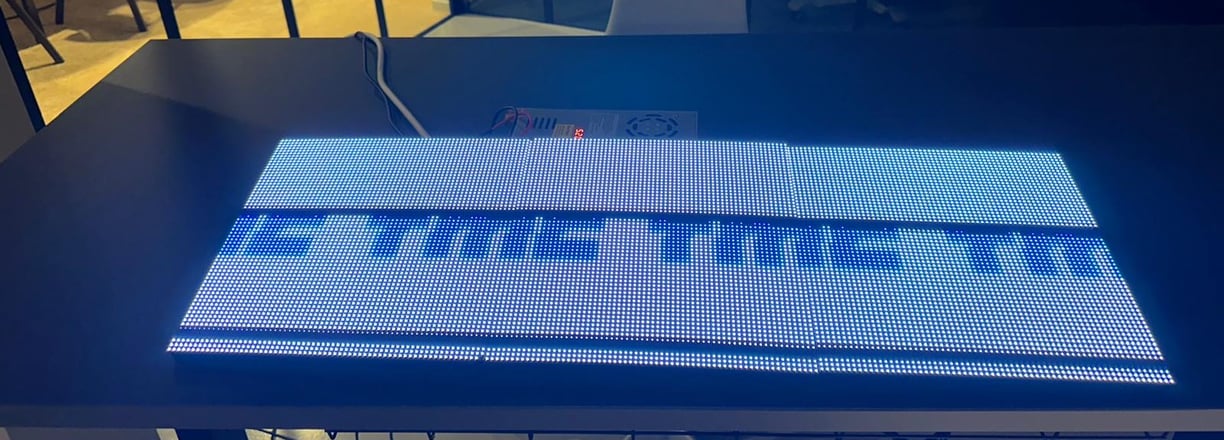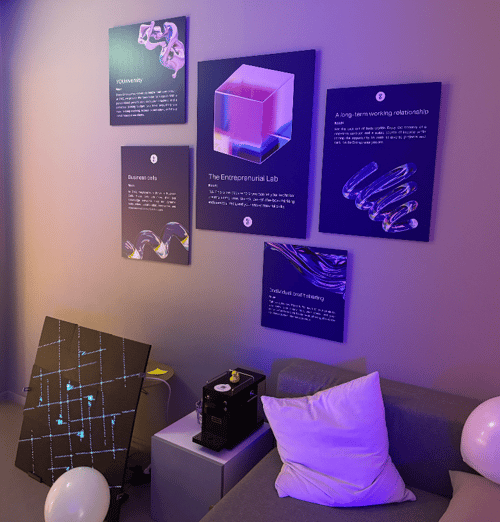innovation is a thought away
LED Matrix Board
Project Overview: LED Matrix Display System
This project involves developing a dynamic LED matrix display system powered by a Raspberry Pi 4 and an Adafruit RGB Matrix Bonnet. The display consists of four 64x64 RGB LED matrices arranged in a 2x2 configuration, forming a 128x128 pixel panel. The system enables the rendering of static images, scrolling text, and dynamic messages, making it suitable for various applications such as notifications, advertisements, and interactive displays.
Project Components
The core components of the system include:
Raspberry Pi 4: Acts as the processing unit, handling image processing and display control.
Adafruit RGB Matrix Bonnet: Provides an efficient interface for driving the LED matrices.
64x64 RGB LED Panels (4x): Combined to create a seamless 128x128 resolution display.
Python with rpi-rgb-led-matrix Library: Controls the LED panels, enabling image rendering and animations.
Docker Environment: The entire software stack is containerized using Docker, ensuring a consistent and reproducible execution environment.
Functionality and Scope
The display system supports multiple modes of operation, including:
Image Rendering: Converts and maps images onto the LED matrix.
Scrolling Text Messages: Displays real-time or pre-configured text messages.
Custom Animations: Allows dynamic visual content to be played.
Brightness Control: Adjusts the LED intensity to optimize visibility.
The Python script handles image processing by resizing and splitting the image correctly across the four matrices. Text and animations are synchronized to ensure smooth rendering.


A tailored info board
Containerized Execution with Docker
To ensure reproducibility, portability, and isolation, the software runs inside a Docker container. This prevents dependency issues and allows the system to be deployed on different Raspberry Pi setups without configuration conflicts. The container encapsulates the Python runtime, required libraries, and display drivers, simplifying execution and maintenance.
Conclusion
This project demonstrates an efficient, scalable, and interactive LED display system using Raspberry Pi. The modular approach allows further expansion, such as integrating IoT-based messaging, external data sources, or AI-driven content generation. By leveraging Docker, the system remains stable, portable, and easily deployable, making it a practical solution for various display applications.


